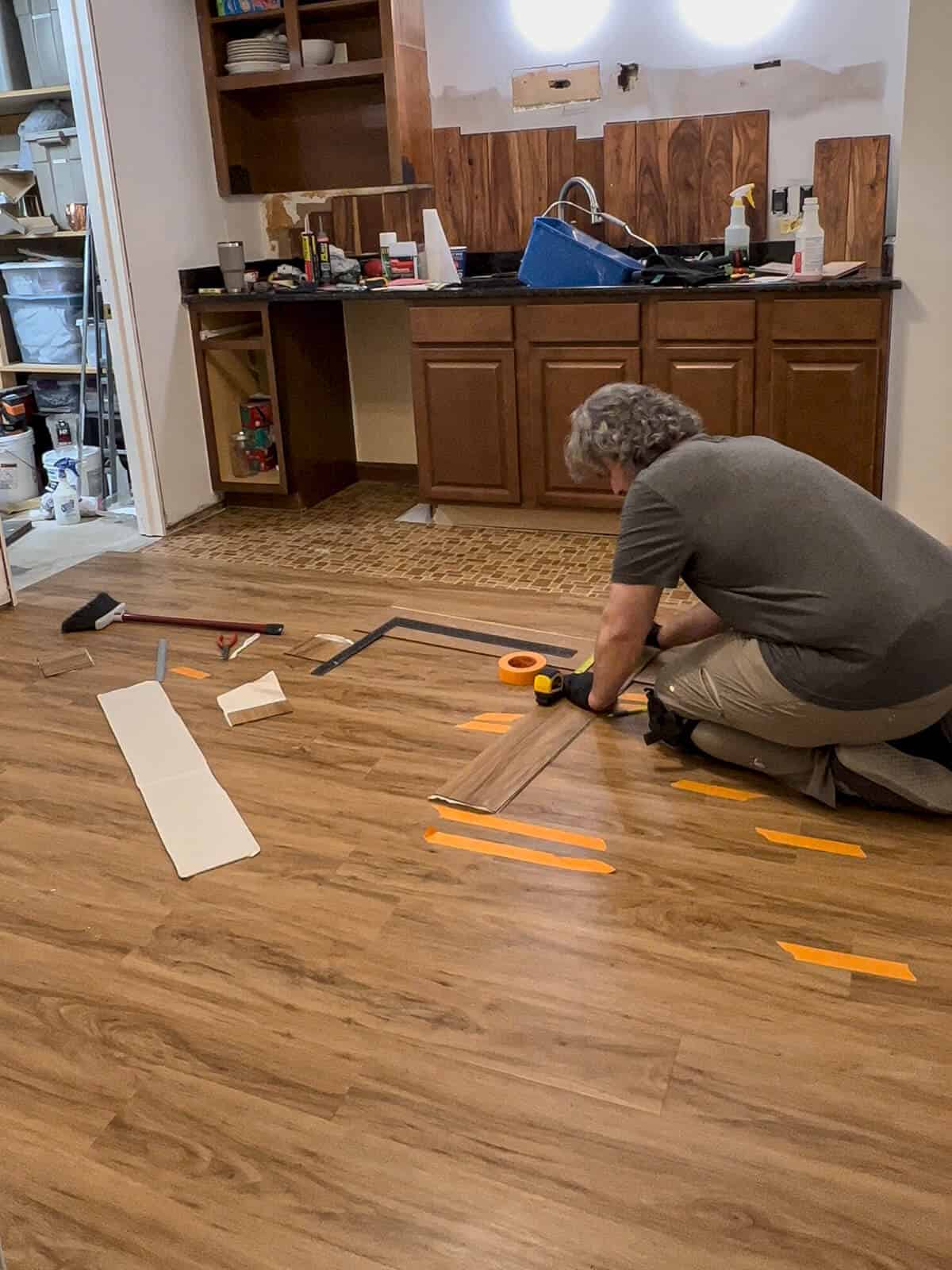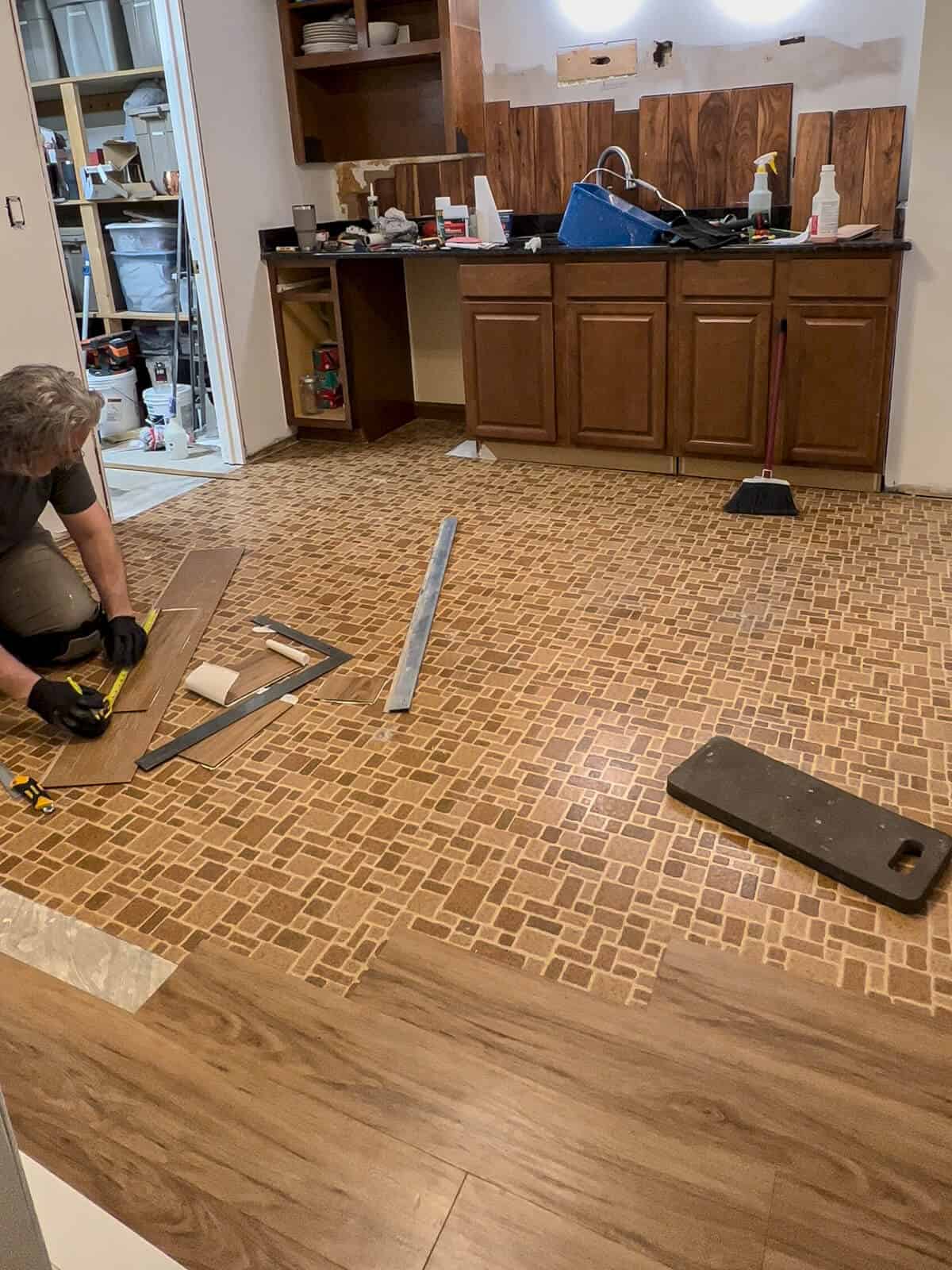Imagine this: You’re finally ready to upgrade your kitchen flooring. No more tired linoleum, you’re going for the luxurious look of ceramic tile! But a question lingers in your mind: “Can I lay tile directly over my existing linoleum?” This is a question that many homeowners grapple with, and the answer isn’t as simple as a yes or no. It depends on a variety of factors, including the condition of your linoleum, the type of tile you choose, and even the climate where you live. This comprehensive guide will delve into the intricacies of laying ceramic tile over linoleum, equipping you with the knowledge to make an informed decision and achieve the stunning kitchen you’ve always dreamt of.

Image: mromavolley.com
Laying ceramic tile over linoleum flooring is a common DIY project that can significantly enhance the style and durability of your space. However, it’s crucial to understand the potential challenges and best practices involved to ensure a successful and long-lasting outcome. This guide will provide a deep dive into the technical aspects, covering everything from the preparation steps to the necessary materials, empowering you to navigate this home improvement endeavor with confidence.
Understanding the Basics: Linoleum and Ceramic Tile
Before diving into the intricacies of laying ceramic tile over linoleum, it’s essential to understand the nature of both materials. Linoleum, a natural flooring material made from linseed oil, rosin, wood flour, and jute, was a popular choice for homes in the past. It’s known for its durability, affordability, and natural resilience. However, over time, linoleum can become discolored, scratched, or even develop cracks. This is where the allure of ceramic tile comes in. Ceramic tile, made from clay that’s fired at high temperatures, has become a preferred flooring choice due to its timeless elegance, durability, and ease of cleaning. Its versatility allows it to complement a range of decor styles, making it a popular option for homeowners seeking a modern and sophisticated touch.
Can You Lay Ceramic Tile Over Linoleum: The Big Question
Now, let’s address the elephant in the room: can you lay ceramic tile over linoleum? The short answer is: sometimes. The success of this project hinges on the condition of your existing linoleum. If your linoleum is in good shape – meaning it’s flat, smooth, and securely attached to the subfloor – then you might be able to lay tile directly on top. However, if your linoleum is damaged, loose, or has uneven surfaces, it’s crucial to remove it before proceeding. Your subfloor needs to be solid and stable to provide a firm foundation for the new tile.
The Pros and Cons of Laying Tile Over Linoleum
Before embarking on this project, weigh the pros and cons of laying tile over linoleum.

Image: www.stkittsvilla.com
Pros:
- **Cost-effective:** Laying tile over linoleum can be a more economical option compared to completely removing the old flooring and starting from scratch.
- **Time-saving:** This method can save you time and effort compared to removing the existing linoleum.
- **Less mess:** This approach involves less dust and debris compared to removing the old flooring.
Cons:
- **Potential for uneven tile:** If your linoleum is not perfectly smooth and flat, the tile may not lay evenly, leading to uneven surfaces and a less aesthetically pleasing outcome.
- **Reduced tile life:** Laying tile over linoleum can lead to a shorter lifespan for your new floor. The movement and instability of the linoleum can cause tiles to crack or loosen over time.
- **Issues with grout:** The porous surface of linoleum can make it difficult to achieve a proper bond with grout, possibly leading to grout cracking or color inconsistencies.
How to Determine if You Can Lay Tile Over Linoleum
To determine if your linoleum is suitable for tile installation, follow these steps:
1. Inspect Your Linoleum:
- **Check for damage:** Look for cracks, holes, or loose sections in your linoleum. Any significant damage should be repaired or the linoleum should be removed.
- **Examine the surface:** Run your hand over the linoleum. If it feels bumpy, uneven, or too soft, you might need to remove it.
- **Test its adhesion:** Try to lift a corner of the linoleum. If it comes up easily, this indicates that the linoleum might be loose and needs to be removed.
2. Assess Your Subfloor:
- **Check for levelness:** Use a level to confirm that your subfloor is flat and level. Any significant variations need to be addressed before laying tile.
- **Check for moisture:** Measure the moisture levels of your subfloor using a moisture meter. Tile installation requires a dry subfloor.
- **Check for structural issues:** Ensure your subfloor is strong and stable enough to support the weight of the ceramic tile. If your subfloor is weak or damaged, you might need to repair or replace it.
Preparing Your Flooring for Tile Installation
If you’ve determined that your linoleum is in good condition and your subfloor is level and stable, you can proceed with preparing your flooring for tile installation. Follow these crucial steps:
1. Clean Your Linoleum:
- **Remove any dirt or debris:** Scrub your linoleum thoroughly with a mild cleaner and allow it to dry completely.
- **Remove any waxes or coatings:** These coatings will hinder the adhesion of the mortar used for tile installation. Use a deglosser or remover to remove any waxes or coatings from your linoleum floor.
2. Apply a Leveling Compound:
- **Fill in any gaps or imperfections:** Apply a self-leveling compound over your existing linoleum to fill in any small gaps, cracks, or uneven areas. Allow the compound to dry completely.
- **Create a smooth surface:** The leveling compound will help create a smooth and level surface for your tile installation.
3. Apply a Bonding Agent:
- **Enhance adhesion:** A bonding agent applied to your existing linoleum will help create a strong bond between the tile mortar and the existing flooring.
- **Choose the right bonding agent:** Select a bonding agent specifically designed for use with linoleum flooring.
Laying Your Tile: The Final Steps
Once your flooring is prepared, it’s time to lay your beautiful ceramic tiles. Here’s a step-by-step guide to ensure a successful installation:
1. Choose the Right Tile:
- **Consider the thickness:** Choose a tile that’s thick enough to withstand the movement of the linoleum underneath.
- **Choose a durable tile:** Select a tile that is known for its durability and resistance to cracking or chipping.
2. Install Tile Mortar:
- **Use a thin-set mortar:** Thin-set mortar is designed for adhering tile to various substrates and offers flexibility, especially over a moving surface like linoleum.
- **Apply mortar to small sections:** Don’t try to cover your entire floor with mortar at once. Work in smaller sections to ensure the mortar stays fresh and workable.
3. Place Your Tiles:
- **Start from a center point:** This method helps ensure symmetry and reduces the risk of uneven tile placement.
- **Use spacers:** Space between your tiles to create even grout lines.
4. Grout Your Tile:
- **Wait for the mortar to set:** Allow the mortar to cure completely before applying grout. This is crucial for a strong and lasting bond.
- **Use grout specifically designed for ceramic tile:** Use a grout that is compatible with the type of tile you’ve chosen.
- **Clean excess grout:** Carefully clean excess grout from the surface of the tiles to maintain a neat and polished finish.
5. Seal Your Tile:
- **Protect your tile:** Apply a sealant to your tile to protect it from stains and moisture.
- **Follow the manufacturer’s instructions:** Always follow the sealant’s directions for optimal effectiveness.
Expert Insights: Tips and Tricks for Success
Professional tile installers offer valuable insights and actionable tips to help you achieve a successful tile installation over linoleum. Here’s some of their advice:
1. Thorough Preparation is Key:
- **Don’t rush the preparation steps:** Proper preparation is the foundation of any successful tile project. Take the time to adequately clean, level, and bond your existing linoleum.
- **Don’t skip bonding agents:** A bonding agent can significantly enhance the adhesion of your tile mortar, especially over a less stable surface like linoleum.
2. Invest in Quality Materials:
- **Don’t compromise on tile thickness:** Choose a tile that is thick enough to withstand the movement of your existing linoleum. A thinner tile might crack or chip over time.
- **Choose a high-quality mortar:** Invest in a quality thin-set mortar that is specifically designed for use with tile over linoleum.
Can You Lay Ceramic Tile Over Linoleum Flooring
https://youtube.com/watch?v=d2j9rRp8zjw
Conclusion: A Journey to Beautiful Flooring
Laying ceramic tile over linoleum flooring is a DIY project that can transform your space, but it requires careful planning and execution. Weigh the pros and cons, and make an informed decision based on the condition of your existing linoleum and the stability of your subfloor. Thorough preparation, the use of high-quality materials, and expert tips can help you bring your dream tile floor to life, creating a space that’s both aesthetically pleasing and durable.






